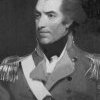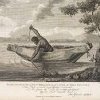Pemulwuy seems to begin a campaign to drive the settlers from what is now western Sydney. As the war continues many settlers have clear relationships with Aboriginal people. They know the different clans and who is related to whom and want to maintain, if not friendly, then at least safe relations with them. A number of brutal killings take place in the region of Argyle Ridge on the Hawkesbury River. Patterson reports that many unemployed settlers have joined the natives “and have taught them how to annoy and distress the settlers”. He has had to arm the herdsmen because the Aboriginal warriors are “entirely led by the villains who have got amongst them.” HRA, Series 2, p. 24. As the war continues, many settlers aim for amicable relationships with Aboriginal people. They often know the different groups and who is related to whom; they want to maintain, if not friendly, then at least safe relations with them.
Pemulwuy concentrates his forces on the older farms in the Parramatta area, at ‘Toongabbie’. The settlers form a punitive party against him. 100 Aboriginal warriors come to Parramatta to confront the soldiers and settlers. Local people recall him marching into town as if in imitation of a detachment of soldiers. He appears to be in a great rage. Pemulwuy is captured, shot, taken into Parramatta hospital and expected to die. Within days he rises up and escapes. He is seen a month later at Botany Bay with the tether still around his leg. Governor Hunter tells Pemulwuy that he is not angry with him. But by April the attacks have started again, this time in the Lane Cove region. A year later the campaigns begin on the farms on Georges River. Karskens, The Colony, pp. 475-477.
By now Pemulwuy has acquired an extraordinary reputation for supernatural powers. He is believed to be immune to gunfire. His attacks continue throughout Parramatta, Prospect and the Georges River. Crops are set ablaze and now flocks of sheep are targets also. Karskens remarks, “These were more than a series of stray skirmishes. This was a serious war, and the response was serious.” Karskens, The Colony, p. 478.

